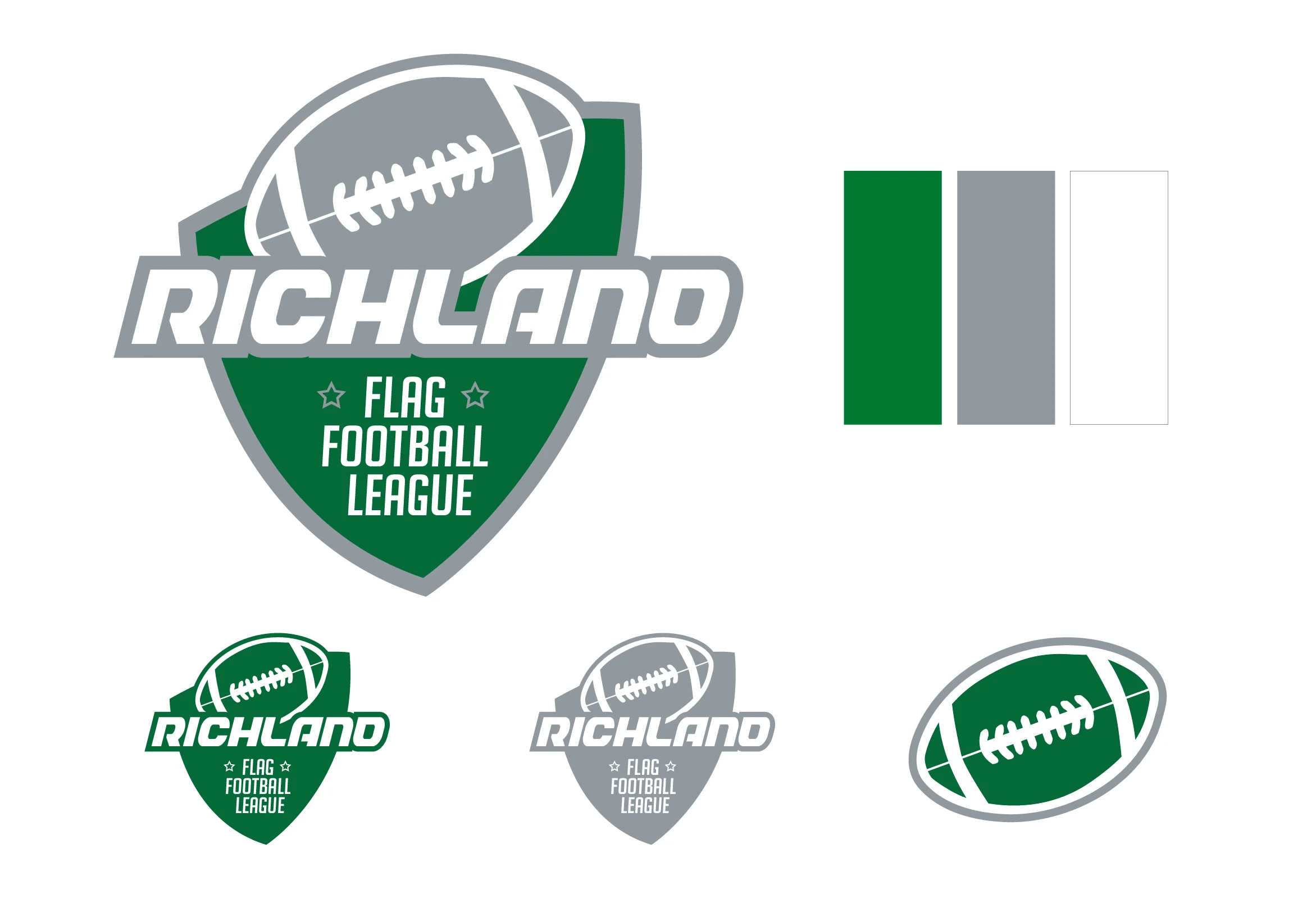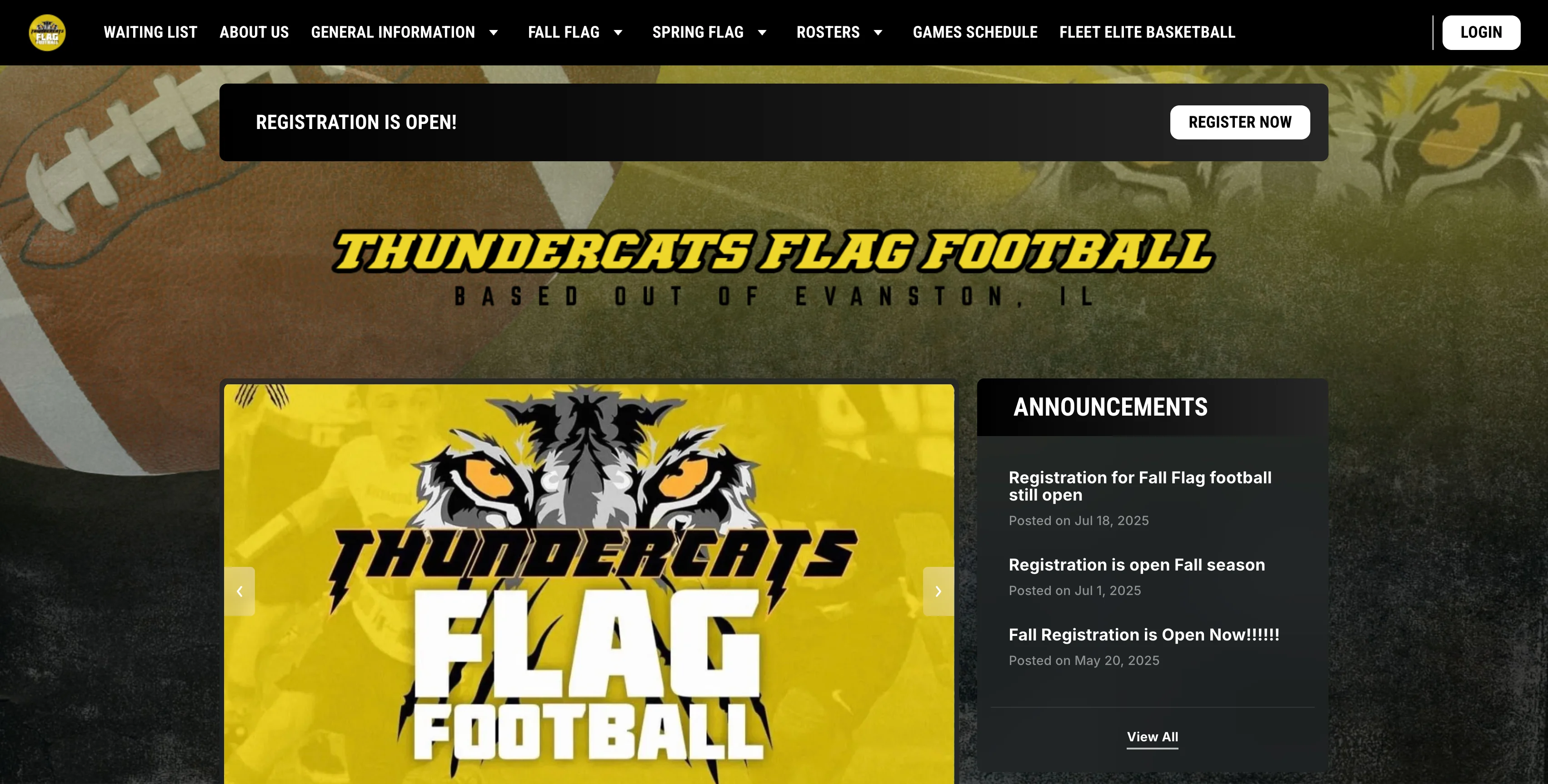How to Start a Flag Football League: A Step-by-Step Guide
Sierra Swigert Last updated: September 10, 2025


Starting a youth flag football league can be a fun and rewarding way to bring your community together, give kids a chance to stay active, and build a love for the game.
While it might feel overwhelming at first, breaking the process into clear steps makes it much more manageable. From defining your league’s purpose and budget to recruiting coaches, securing fields, and promoting your program, you can get your league up and running successfully.

How much does it cost to start a flag football league?
Starting a flag football league is generally less expensive than tackle football, but you’ll still need to budget for equipment, facilities, insurance, and basic operations. A small league with 50–100 players can usually get started for around $3,000 to $10,000, depending on how polished you want things to look.
Here’s a breakdown of common startup costs:
- Field Rental: $500 - $2,500 per season, depending on local schools, parks, or turf facilities
- League Insurance: $500 - $1,500 per year
- Equipment: $500 - $2,000 for flags, footballs, cones, whistles, first aid kits, and more
- Uniforms: $30 - $50 per player
- Referees: $25 - $50 per game (budget a few hundred per season)
- Digital Marketing: $200 to $1,000 per year for a website, online registration software and ads
- Miscellaneous: $200 - $500 for snacks, trophies, and league events
👉 Pro Tip: Many leagues cover ongoing costs through player registration fees, typically $50 to $150 per child. Once your league is up and running, it can often sustain itself financially.
Starting a flag football league step by step
Now that you have a sense of what it might cost to get your league off the ground, it’s time to dive into the actual process. Starting a flag football league may feel overwhelming at first, but we’ll break it down into 8 clear steps to make it much more manageable.
1. Define your league’s purpose and structure
Before you dive into signing up players or reserving fields, take a step back and think about the “why” behind your league. What’s the main goal? Are you building a fun, recreational program where kids just get to play, or do you want something more competitive? Who’s it for - specific age groups, co-ed teams, or a certain skill level? And how long do you want your season to run?
Deciding on basics like age divisions and game format early on (say, 5-on-5 vs. 7-on-7) will save you a ton of headaches later. For example, a middle school recreational division might just need one game a week with volunteer referees, while a high school division could require certified officials and more structured rules.
2. Create a budget and secure funding
Once you’ve outlined your league’s purpose, the next step is to create a budget. Start by listing your major fixed expenses: field rentals, insurance, marketing, etc. If it’s your first time putting a budget together, start with estimates from local facilities or vendors so you’re working with realistic numbers.
Don’t forget to include smaller but important costs like first aid kits, trophies, or event supplies. A clear budget will help you avoid surprises and set registration fees at a level that covers expenses.
Once you’ve determined how much you’ll need to run your flag football program, explore ways to raise funds. The most common source of revenue is participant registration fees, but you can also offset expenses through local sponsorships, grants, community donations, or small fundraisers.
3. Find and secure a location
The next step is finding a place to play. Start by checking with local schools, parks, and recreation departments to see what fields are available. Some leagues rent school fields on weekends, while others partner with community parks to share space. Be sure to ask about costs, availability, and any restrictions - like blackout dates, lighting, or field maintenance requirements.
It’s also important to think about convenience for families. A central location with plenty of parking can make a big difference in participation and retention. If possible, visit the site in person to get a feel for the layout and make sure it fits the size and format of your games.
4. Get the necessary permits and insurance
Most cities and schools require a permit to use fields, even for weekend games, so apply early! Having permits in place ensures you’ll have a reliable location for practices and games.
You’ll also want to protect your league from potential risks by having participants acknowledge waivers. Liability and accident insurance can cover medical costs or legal expenses if an injury happens, and many providers offer policies built for youth sports. Be sure each parent or guardian signs a waiver, too. Taking these steps may feel tedious, but they create a safety net that keeps your league running smoothly.
5. Purchase equipment and uniforms
At minimum, you’ll need flag belts, age-appropriate footballs, cones or markers, whistles for referees, and a stocked first aid kit. Larger leagues may also want items like scoreboards, down markers, or storage bins to keep everything organized. Investing in durable equipment up front can save money over time.
Uniforms help build team spirit and give your league visibility in the community. Many flag football teams start with simple, color-coded T-shirts for each team, then move up to branded jerseys with logos and sponsor names as they grow.
6. Recruit coaches, referees, and volunteers
Running a league takes more than just players. You’ll need leaders to keep things organized. A small board or group of volunteers can handle administration, marketing, scheduling, and field maintenance. It may feel like trial and error at first, but over time your team will run more smoothly.
Coaches are especially critical. Parents are often willing to step up if you keep the commitment clear, usually a weekly practice and a weekend game. Offering a small incentive, like a discount on registration, can help. Make sure new coaches also have access to flag football resources so they feel supported from day one.
7. Set registration and league rules
A smooth first season starts with clear expectations. Outline who can participate, how much it costs, what paperwork is required, and key deadlines. Keep the process simple for families, whether you collect forms online or in person.
Your league rules are just as important. Decide if you’ll follow national flag football standards (like NFL FLAG or USA Football) or create a modified version. Be sure to include policies on non-contact gameplay, safety, and sideline behavior for both players and parents. Having everything in writing helps prevent confusion and creates a positive environment for your league.
8. Build your schedule
Once teams are set and rules are in place, the next step is creating a game schedule. Start by confirming field availability since that will shape everything else. Then map out matchups so each team plays a fair number of games without seeing the same opponent too often. Aim for balance so no team ends up with all early or late games.
If you plan to hold playoffs or a championship, leave space at the end of the season for those games, as well as a few open dates for weather-related makeups. Share the schedule with coaches and families early so everyone has time to plan. A clear, organized schedule keeps the season running smoothly for players, parents, and volunteers.
👉 Pro Tip: Use a Sports Schedule Generator to create round-robin schedules for your league in minutes. You can customize locations, post game results and track standings.
Tools to simplify league management
Running a flag football league means managing registrations, payments, schedules, and constant communication with families. To save time and reduce stress, consider using sports management software built for youth leagues.
A platform like Jersey Watch can streamline online registration, securely process payments, build game schedules, and send updates to coaches, parents, and players - all in one place.
Instead of relying on spreadsheets, paper forms, or group texts, a management tool keeps your league organized and professional. It also makes things easier for families, who can register, pay fees, and stay informed with just a few clicks.
Marketing your flag football league
Strong marketing helps you attract players, recruit volunteers, and build a sense of community around your program. The good news is that promoting a flag football league doesn’t have to be complicated.
With fundamentals such as a clear brand, an online presence, and some local partnerships, you can spread the word quickly and start filling your rosters.
Create your logo and brand
Before marketing your league, start by creating a logo and brand. A strong visual identity helps your league stand out, builds credibility, and makes it easier for families and players to recognize your program.
You don’t need to be a designer yourself. Freelance platforms like Upwork or Freelancer make it affordable and simple to have a logo professionally created.

A strong logo and branding will help build credibility for your new league.
If you’re starting a league from scratch, NFL Flag Football offers plenty of marketing materials and resources to get your league up and running.
Build a league website
A central website makes it easy for players and parents to find everything they need in one place. Use your site to handle online registration, collect payments, and share schedules, rosters, and coach contact information. Posting a full season schedule before practices begin helps families plan ahead and keeps everyone on the same page.
A website also serves as a hub for league updates, announcements, and resources, making communication simple and organized. Platforms like Jersey Watch are designed for youth sports leagues, allowing you to build a professional, easy-to-use site without needing advanced tech skills.

A youth flag football website built using Jersey Watch tools
Promote through social media and local community groups
Social media is a powerful way to share league news and engage with potential players and families. Platforms like Facebook and Instagram let you post updates, photos, and reminders about registration, practices, and games. You can also join neighborhood forums, community groups, or local parenting networks to reach families in your area.
Regular posts and interaction help build excitement, keep your league top of mind, and make it easy for people to share information with friends. Social media is a simple, cost-effective way to grow your league while fostering a sense of community.
Partner with schools, rec centers, and sports stores
Local partnerships can boost your league’s visibility and credibility while creating new opportunities for recruitment and support. Schools, recreation centers, and sports stores are natural allies for promoting your league through flyers, newsletters, or in-person events.
These partnerships help you reach families directly, build trust within the community, and can even provide additional resources, such as access to fields, equipment discounts, or volunteer support. Working with local organizations makes it easier to grow your league and keep players engaged season after season.
Launch your flag football league with Jersey Watch
Starting a flag football league involves a lot of moving parts, from defining your league’s purpose and securing fields to recruiting coaches, managing registrations, and promoting your program.
Using the right tools makes all of these tasks easier. Jersey Watch simplifies league management by handling online registration, payments, schedules, and communication in one place, giving you more time to focus on creating a fun, organized experience for players and families.
Get started today and bring your league to life: Sign up for Jersey Watch.